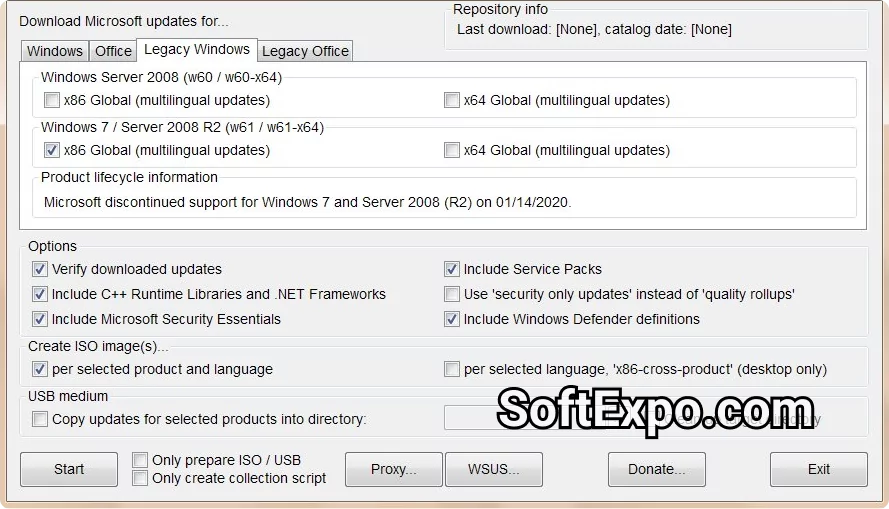All rights reserved © 2025
Managing Windows updates across disconnected networks and air-gapped systems presents unique challenges for IT administrators. WSUS Offline Update emerges as a robust solution for deploying Microsoft patches without direct internet connectivity, transforming complex update scenarios into streamlined operations.
WSUS Offline Update functions as a standalone patch management tool that downloads Microsoft updates to portable media, enabling administrators to update Windows systems, Office installations, and critical runtime libraries offline. Unlike traditional Windows Server Update Services deployment, this utility operates independently, requiring no infrastructure dependencies.
The tool addresses critical scenarios: isolated networks, bandwidth-constrained environments, secure facilities prohibiting internet access, and remote site management. Organizations managing industrial control systems, classified networks, or geographically distributed endpoints find particular value in offline patching capabilities.
Comprehensive Update Coverage
WSUS Offline Update supports Windows client operating systems from Windows 7 through Windows 11, Windows Server editions, Microsoft Office suites, and essential runtime components including .NET Framework, Visual C++ redistributables, and Windows Defender definitions. The tool intelligently manages cumulative updates, security-only patches, and service pack integration.
Flexible Deployment Options
Administrators can generate ISO images for DVD distribution, create USB-based update packages, or maintain network-accessible update repositories. The UpdateGenerator interface provides granular control over update selection, enabling customized patch collections tailored to specific organizational requirements.
Version Management Considerations
Development transitioned to community-maintained forks following the original project’s conclusion. The GitLab-hosted successor continues active development, addressing modern Windows versions and evolving security requirements. Enterprise users should evaluate both legacy and community editions based on specific OS compatibility needs.

Initial Setup and Configuration
Download the appropriate version matching your target systems. Extract the package to a dedicated workstation with reliable internet connectivity. Launch UpdateGenerator.exe to access the configuration interface. Select target operating systems, Office versions, and supplementary components through the tabbed interface.
Update Collection Strategy
Schedule regular update synchronization cycles, ideally monthly following Microsoft’s Patch Tuesday releases. Maintain versioned archives of update packages for rollback scenarios. Document included patches using the tool’s logging capabilities for compliance reporting.
Deployment Workflow Optimization
Create standardized update packages for common system configurations. Implement staged deployment across test environments before production rollout. Leverage command-line parameters for automated installation sequences. Monitor installation logs for troubleshooting failed updates.
More useful tools in our system and utilites category.
WSUS Offline Update operates independently from official Microsoft update channels, introducing validation considerations. Organizations must verify update authenticity through hash verification and digital signature checks. The tool cannot bypass Extended Security Update licensing requirements for end-of-life systems.
Performance varies based on update volume and target system specifications. Initial update collections may require substantial download time and storage capacity. Subsequent synchronizations leverage differential updates, reducing bandwidth requirements.
Microsoft’s official Wsusscn2.cab provides basic offline scanning capabilities but lacks comprehensive update delivery. Autopatcher offers similar functionality with different update selection mechanisms. Enterprise environments may prefer System Center Configuration Manager for centralized management despite increased complexity.
Offline patching introduces time delays between patch release and deployment, potentially extending vulnerability windows. Organizations must balance security risks against operational constraints. Maintain detailed patch deployment records for audit requirements. Implement compensating controls during update preparation periods.
Hash verification failures typically indicate corrupted downloads requiring re-synchronization. Command prompt errors during update generation often relate to network connectivity or Microsoft server accessibility. Installation failures may require manual prerequisite installation or system file repairs.
As Microsoft transitions toward cloud-centric update delivery, offline patching tools face evolving challenges. Organizations should evaluate hybrid approaches combining WSUS Offline Update with traditional patching methods. Consider migration strategies toward connected update infrastructure where feasible while maintaining offline capabilities for critical scenarios.
WSUS Offline Update remains invaluable for specific use cases despite unofficial status. IT administrators managing disconnected systems benefit from understanding its capabilities, limitations, and optimal deployment patterns. Regular testing and documentation ensure successful implementation when internet-based updates prove impractical or impossible.
Yes, WSUS Offline Update is completely free to use. You can download WSUS Offline Update from our site and use it to install Windows updates without internet access.
WSUS Offline Update is a Windows update tool designed for offline patching. It allows system administrators and regular users to install critical updates, security patches, and service packs on Windows computers without connecting each machine to the internet.
To use WSUS Offline Update, download the program, select the Windows or Office versions you want to update, and let the tool create an offline update package. You can then run the updater on target PCs to install all updates quickly and securely.
Yes, one of the main advantages of WSUS Offline Update is the ability to install updates without internet access. This makes it very useful in corporate environments, isolated networks, or when updating multiple PCs without consuming bandwidth.
WSUS Offline Update is widely used by IT professionals and system administrators because it downloads updates directly from Microsoft servers. This ensures the patches are authentic, making the tool a safe and reliable choice for keeping Windows systems up to date.